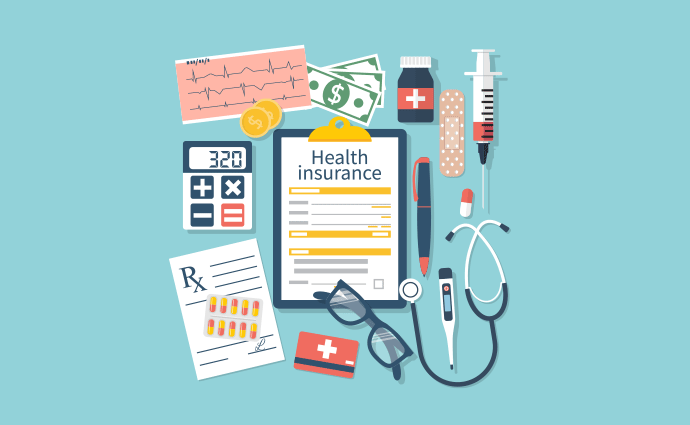
When you have symptoms that suggest lupus, you may be worried and wonder what's wrong with you. It is important to have a test as soon possible.
How is lupus diagnosed?
Lupus is a complex disease that has many symptoms, some of which are similar to other illnesses. Your doctor will review your medical records and conduct a physical to check for any possible signs. He or she will also order blood tests and other types of testing to confirm the diagnosis.
Your doctor begins by asking you about your health and symptoms. This includes any illnesses that you may have, like the flu or a common cold. He or she will then ask questions about your family history to see if you have any family members who have had lupus.

The doctor will usually run some blood tests for things such as low blood counts or anemia, which are both associated with lupus. Your doctor can use the results to determine whether you have lupus, or another autoimmune condition such as type 1 diabetes or rheumatoid arthritis.
If the results of the tests show that you are suffering from lupus your doctor may order additional tests to identify its cause. These tests can give your doctor important information about your kidneys and blood cells, as well as your skin.
Lupus is a condition that can affect a number of organs. This includes your kidneys. The inflammation can also cause your heart to be affected, causing conditions like pericarditis and myocarditis that can lead to chest pain. The inflammation can also damage your heart valves, which can lead to complications such as a heart murmur and endocarditis, which can cause swelling in the valves.
How is Lupus treated?
You can control your symptoms by taking powerful medications like nonsteroidal anti-inflammatory (NSAID) drugs or corticosteroids. These medicines can reduce pain and inflammation in your joints and other areas of your body. Your doctor monitors how your symptoms react to these treatments, and will make any necessary adjustments.

You may be offered other treatment options by your doctor, depending on severity and impact of symptoms. If you need to be on medication for an extended period, it is important to discuss with your doctor the side-effects of these drugs and your treatment options.
How to diagnose lupus with a biopsy
A skin biopsy is a procedure that removes a sample of the affected area and studies it in a lab. This sample can be analyzed under a microscope to look for signs of the condition, and can help your doctor make a definitive diagnosis.
This isn't a necessary procedure, but a doctor may order it if they suspect that your symptoms are caused by lupus. The doctor may order chest X rays and echocardiograms to check for a condition in your heart called pericarditis. They can also determine whether you suffer from nephritis (a kidney disease caused by inflammation of the kidney).
FAQ
What is the difference in public and private health?
Both terms refers to the policies made by legislators or policymakers to change how health services are delivered. It could be local, regional, or national to decide whether a new hospital should be built. The same goes for the decision whether to require employers provide health insurance. This can be done by local, national or regional officials.
What are the health services?
A health care service is a medical facility that provides healthcare services for patients. A hospital is an example. A hospital typically includes several departments like the emergency department and intensive care unit. It also has pharmacy and outpatient clinics.
What is the difference between a doctor and a physician?
A doctor refers to a person who is licensed to practise medicine and has completed his/her training. A physician can be described as a medical professional who is skilled in a specific area of medicine.
How can I get free health insurance in my area?
If you are eligible, you can apply for free insurance. If you are eligible, you might be eligible to Medicaid, Medicare or CHIP, Children's Health Insurance Program(CHIP), Tricare benefits, VA benefits and Federal Employee Health Benefitss (FEHB), military benefits, Indian Health Service benefits (IHS), or another program.
Statistics
- Consuming over 10 percent of [3] (en.wikipedia.org)
- About 14 percent of Americans have chronic kidney disease. (rasmussen.edu)
- For the most part, that's true—over 80 percent of patients are over the age of 65. (rasmussen.edu)
- Healthcare Occupations PRINTER-FRIENDLY Employment in healthcare occupations is projected to grow 16 percent from 2020 to 2030, much faster than the average for all occupations, adding about 2.6 million new jobs. (bls.gov)
- Foreign investment in hospitals—up to 70% ownership- has been encouraged as an incentive for privatization. (en.wikipedia.org)
External Links
How To
What are the Four Health Systems?
The healthcare system is complex and includes many organizations, such as hospitals, clinics. pharmaceutical companies. insurance providers. government agencies. public health officials.
The overall goal of this project was to create an infographic for people who want to understand what makes up the US health care system.
These are some key points.
-
Annual healthcare spending amounts to $2 trillion, or 17% of GDP. This is nearly twice the amount of the entire defense spending budget.
-
In 2015, medical inflation reached 6.6%, which is higher than any other consumer category.
-
Americans spend an average of 9% on their health costs.
-
As of 2014 there were more than 300,000,000 Americans who weren't insured.
-
Although the Affordable Care act (ACA) was signed into law, its implementation is still not complete. There are still gaps in coverage.
-
The majority of Americans think that the ACA needs to be improved.
-
The United States spends more on healthcare than any other country.
-
The total cost of healthcare would drop by $2.8 trillion annually if every American had affordable access.
-
Medicare, Medicaid, and private insurers cover 56% of all healthcare spending.
-
The top 3 reasons why people don't get insured include not being able to afford it ($25 billion), not having enough time to look for insurance ($16.4 billion), and not knowing about it ($14.7 billion).
-
HMO (health management organization) and PPO(preferred provider organisation) are the two types of plans.
-
Private insurance covers all services, including doctor, dentist, prescriptions, physical therapy, and many others.
-
The public programs cover outpatient surgery as well as hospitalizations, nursing homes, long term care, hospice, and preventive health care.
-
Medicare is a federal program providing senior citizens health coverage. It covers hospital stays, skilled nursing facility stay, and home healthcare visits.
-
Medicaid is a joint federal-state program that provides financial assistance for low-income individuals or families who earn too little to qualify for other benefits.